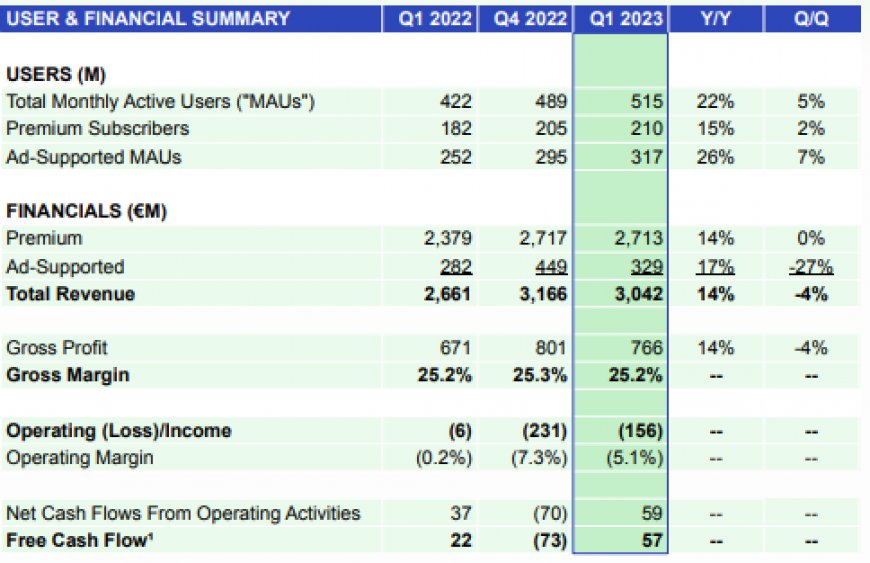Spotify reaches 500M users, but faces challenge in retaining premium subscribers
Spotify has reached 500 million users, but its premium subscriber portion has fallen to 40%. Find out why more users are opting for the free version here.

Spotify now has 515 million monthly active users (MAUs), representing a 5% increase on the previous quarter and 22% increase on the corresponding period last year.
This is the first time Spotify has claimed a user base in excess of half-a-billion users, with 210 million premium subscribers and 317 million on the ad-supported plan. However, it represents a ratio of 40% paid-to-free listeners, a ratio that seems to be in free fall.
For comparison, Spotify’s premium subscribers constituted 46% of its overall user base in Q1 2019, falling to 45% in Q1 2020, 44% in Q1 2021, and 43% in Q1 last year, before dropping to just under 42% for the previous quarter.
A two-percentage point drop in the premium-to-free listeners ratio from quarter-to-quarter seems significant. It’s not clear how many premium subscribers may be switching to the free ad-supported tier, but it is clear that Spotify’s ad-supported user base is outpacing its premium subscribers, quite possibly due to consumer cost-cutting due to the economic downturn.

This isn’t translating into ad-supported revenues, however. Spotify’s figures show that while its income from advertising grew 17% year-on-year, it actually fell by 27% on the previous quarter, with its total revenue dropping by 4% (though it increased by 14% on a year-on-year basis).
The company acknowledged that its revenue growth fell below expectations due to “macro-related variability in our advertising business.”
However, Spotify is keen to stress that its MAUs grew by 26 million users overall vs a guidance of 15 million, making it the company’s single-biggest Q1 net growth and second largest quarterly growth in its history. Now, if only it could convert more of them to premium subscribers.
Another notable takeaway from its Q1 2023 shareholder report relates to its operating losses. While its losses this time around were improvement on the last quarter (€156 million vs €231 million on Q4 2022), the company is forecasting this trend to continue, with a projection of €129 million in operating losses for Q2 2023.
